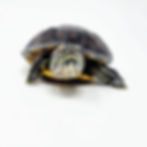top of page

Reptiles and Amphibians
Below are just some of our herptiles (reptiles and amphibian) here at The 6 Day Zoo. For more information about our additional animals, please contact us.
Ball Python







Florida Kingsnake


Western Hognose Snake
not available at this time




Veiled Chameleon
not available at this time




Crested Gecko



Leopard Gecko




Red Eared Slider



Berber Skink



Blue-Tongued Skink



Pixie Frog

Cane Toad




Argentine Black and White Tegu

barbossa1 sm

barbossa1 sm
Savannah Monitor
not available at this time

Russian Tortoise

Bearded dragon

West African Egg Eating Snake

Red Tail Boa
Blue-Tongued Skink
Blue-Tongued Skink

Pacman Frog
bottom of page